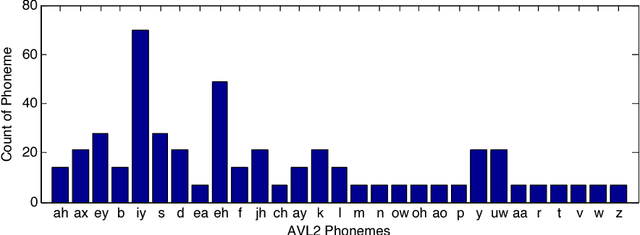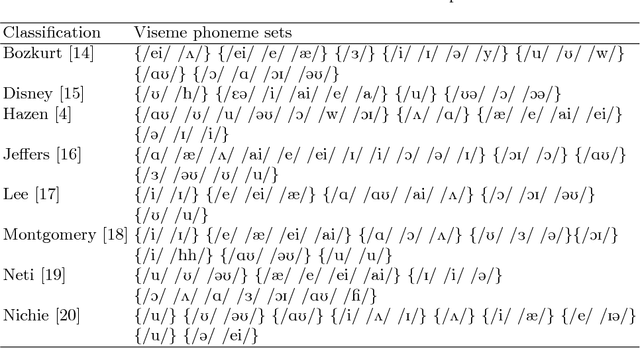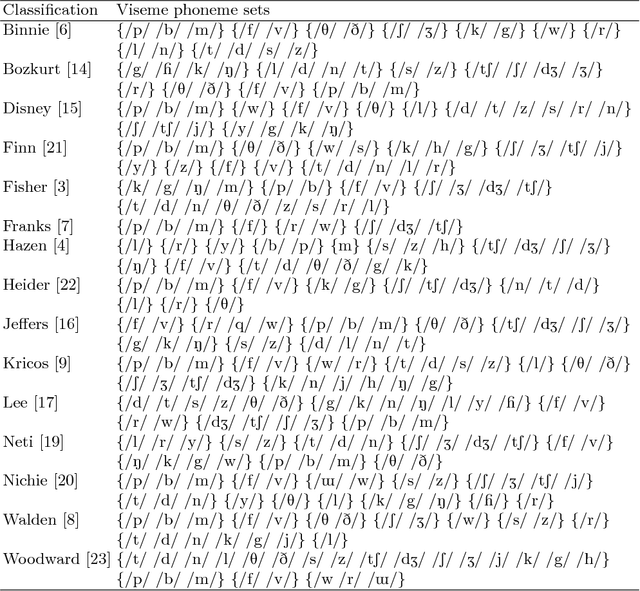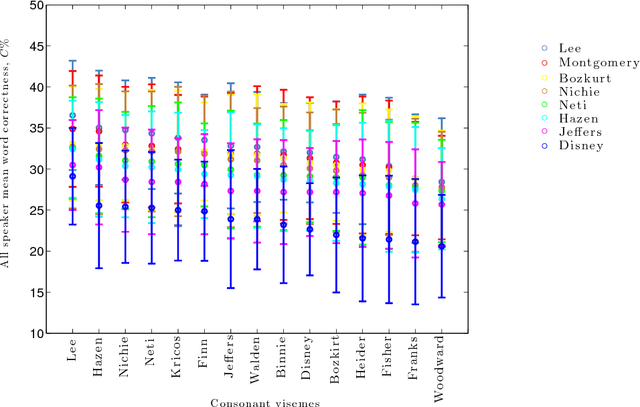Richard W. Harvey
Finding phonemes: improving machine lip-reading
Oct 03, 2017



Abstract:In machine lip-reading there is continued debate and research around the correct classes to be used for recognition. In this paper we use a structured approach for devising speaker-dependent viseme classes, which enables the creation of a set of phoneme-to-viseme maps where each has a different quantity of visemes ranging from two to 45. Viseme classes are based upon the mapping of articulated phonemes, which have been confused during phoneme recognition, into viseme groups. Using these maps, with the LiLIR dataset, we show the effect of changing the viseme map size in speaker-dependent machine lip-reading, measured by word recognition correctness and so demonstrate that word recognition with phoneme classifiers is not just possible, but often better than word recognition with viseme classifiers. Furthermore, there are intermediate units between visemes and phonemes which are better still.
Speaker-independent machine lip-reading with speaker-dependent viseme classifiers
Oct 03, 2017



Abstract:In machine lip-reading, which is identification of speech from visual-only information, there is evidence to show that visual speech is highly dependent upon the speaker [1]. Here, we use a phoneme-clustering method to form new phoneme-to-viseme maps for both individual and multiple speakers. We use these maps to examine how similarly speakers talk visually. We conclude that broadly speaking, speakers have the same repertoire of mouth gestures, where they differ is in the use of the gestures.
Which phoneme-to-viseme maps best improve visual-only computer lip-reading?
Oct 03, 2017



Abstract:A critical assumption of all current visual speech recognition systems is that there are visual speech units called visemes which can be mapped to units of acoustic speech, the phonemes. Despite there being a number of published maps it is infrequent to see the effectiveness of these tested, particularly on visual-only lip-reading (many works use audio-visual speech). Here we examine 120 mappings and consider if any are stable across talkers. We show a method for devising maps based on phoneme confusions from an automated lip-reading system, and we present new mappings that show improvements for individual talkers.
 Add to Chrome
Add to Chrome Add to Firefox
Add to Firefox Add to Edge
Add to Edge